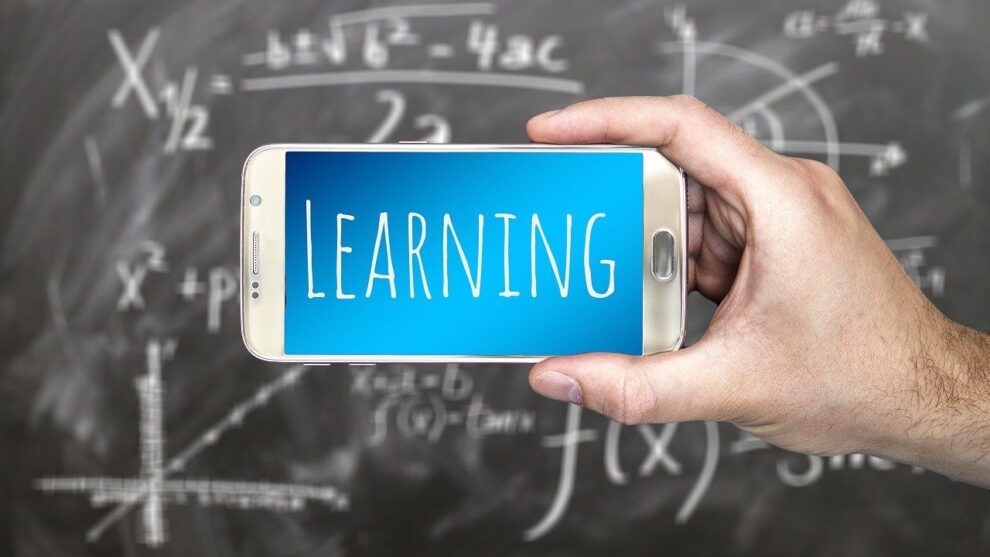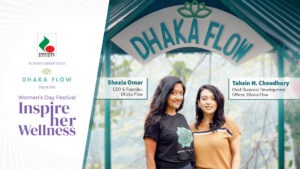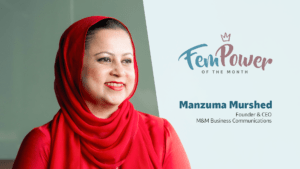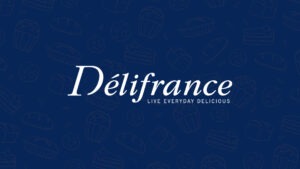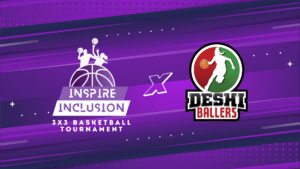1. Tell us about yourself.
My name Syed Hemu Rahman, my primary drive and obsession, passion is making knowledge more accessible. That’s always been my goal. In 2012 I kicked off that entrepreneurial journey and started one of the very first consumer 3D printing companies, the Micro 3D printer. It was really good timing, lots of luck but I think a combination luck and passion made things “kind of happen”. I say kind of because we fizzled out, not all companies make it in their first few years. At least at the time, around 2013/2014 we raised $3.4 million on Kickstarter, shipped 50,000 units. That was the first step on that journey towards making knowledge, tools and education more accessible. At the time we went from 3 of us hanging out in our basement in Bethesda, just tinkering with random ideas, to 70 people within 6 months. We made so many mistakes. In 2015, we ran out all of our money, had to take out bank loans. That’s around the time I left to explore other options. But during my time, there was a lot of invaluable learning. A first step along that journey, towards that bigger picture of making that knowledge more accessible which is something I’ve been fueled by ever since Walter Johnson. My art teacher, a ceramics teacher was the first person who encouraged me that I could make a career of out design. But coming from a South-East Asian, I thought that was a joke. How are you going to make a living out of art and making things look nice? She was the first person who introduced me to the concept of taking a passion in design and actually making a career out of it. That was the first time I realized that you can impact not just one person’s life but the lives of everyone (hopefully the 50,000 people that bough our 3D printer) is a result of that one person who introduced me to that knowledge, that you can do something with design. The past 4 years, I’ve worked at Neosensory building tech for people who are deaf, another amazing mission. That brings us to Brainfood today, my time at Neosensory definitely ignited my passion. If you can make knowledge more accessible, you’re not just altering the lives of people who have discovered something extremely meaningful to them, but they might go pass that knowledge and go impact 50,000 more people. That in it of itself is one of my driving philosophies I live by.

2. What was your ideology behind creating Brainfood?
It was a two part mission that has continued to evolve over the past year. The more users we talk to, the more we understand our customers. So the initial idea came from my immense curiosity, potentially to a fault because I ask so many questions about everything that I can get annoying sometimes. But I think curiosity is the one of the most important qualities you should never let go of as you walk through life. We’re curious as kids, we’re absorbing, and we’re sponges. But as we get older we start accepting things for the way they are and we stop asking questions about the world. So definitely Curiosity was the first pillar that drove Brainfood. The second was actually around Digital Hygiene. So I realized with 20 spare minutes I’m usually listening to a podcast, 10 spare minutes I’m hopefully watching an education YouTube video, or something interesting and meaningful. But I’m checking my phone almost 100 times a day for 1 minutes or less and that’s just a natural interaction. I tell myself that I follow inspirational designers on Instagram, I’m checking the news, following thought weavers on twitter and all that. But the reality is, every time I check my phone I end up looking at some unnecessary content on Instagram or TikTok. Why do need to check the news 10 times a day right now? There’s nothing good or new or positive for that matter to be looking at. Then I realized instead of approaching our phones with such a passive approach, like Android and iOS will tell you that you spent 3 hours on Instagram today. You’re never going to do anything about that, you might feel guilty about it but it is what it is. Instead we all deserve more meaningful 1 minute interactions. Why not build something to really harness this natural interaction we have with our phones and make it more meaningful. So Brainfood started as a combination of those two things- knowledge and curiosity and actually taking advantage of that really natural interaction. If we do a good enough job maybe we can encourage people to open up Brainfood more instead of Instagram or TikTok. That’s the goal. The last point was something we discovered after talking to well over 100 users of Brainfood, for the past few months we’ve had about 750 folks consuming us and giving us feedback, hopping on hour long calls to talk with us about their motivations, their interests, why they use Brainfood. I think one beautiful thing we discovered which has really stuck with me, and we’ll continue to build off of is foundational aspect of Brainfood- is accessibility of knowledge. By accessibility of knowledge I mean, a lot of folks especially as adults wander through life realizing they probably should understand and know a lot more about the world we live in, everything from politics to pandemics to recessions to bankruptcy to whatever else it might be. Most of us, as adults don’t actually know or understand a lot of information we see all these headlines in the news like Artificial Intelligence is emerging and may eventually take over all of our jobs, or Blockchain is potentially going to be our future, or the general elections are coming up. I bet you most of the adults we’ve talked to in the U.S. have forgotten how the Electoral College works or what the primary elections are, what actually happens behind the scenes. With Brainfood we realized we had this unique opportunity to help you understand the world we live in through the lens of history, science and technology. For example, the lessons we’re kicking off with are 1. The Immune System which is very relevant right now. Instead of talking about negative news like Covid-19 deaths, why not actually learn about how your immune system works? Wouldn’t it be great piece of knowledge to have and understand, not just a as child in biology class but as an active adult. Following that is Wildfires. What are Wildfires, how do they work, why are there so many wildfires in years of 2019 and 2020. By understanding how all of that works, you might play a role as a responsible human being. We’re also doing a lesson on Harriet Tubman, and not just addressing systemic racism and all the rest that’s going on, but shining a light on a historical figure who made such a huge impact on inclusivity and diversity and all the rest today. Those are just a couple of lessons for context, but that’s become another really big pillar of Brainfood- making knowledge accessible so we can all understand the world we’re living in today.

3. What is Digital Hygiene? And how can we practice it?
I feel like a vast majority of adults, we’re not good about our online presence. There’s a guilt that’s associated with using our phones, often times especially now during Covid-19. We’re all stuck at home, not much to do so the easiest thing is to mindlessly open up your phone and scroll through Facebook or Instagram to see what others are up to. That’s not really adding any value to your life. There’s always an ounce of guilt a lot of us carry with us for the roughly 5-10 hours a days we end up starting at our phones. That resonates with a lot of folks we have talked to and interviewed. And of course ourselves being case studies. Again interacting with our phones is a really natural thing to do, we don’t even think about it. We mindlessly pull our phone out of our pocket, I think an average of 57 times a day is a statistic. I’m sure my usage is way beyond that. We all deserve not to be battling digital hygiene in this passive way, but we should be more active about the way we use our phones. And it’s not on the user, it’s on the people who are designing that content. So with Brainfood, we want to be a meaningful interaction which adds value to your day.
4. You mentioned that you wanted people to understand things a lot more. Would you say this is a root of your inspiration for content and ideas for Brainfood? Do you have a certain process for brainstorming?
I think it all comes down to our incredibly talented content teams, so I won’t take credit for that. There’s a two part process here. One is that our users come first, always. Maybe we aren’t meeting that standard just yet, but hopefully we can continue to put their needs first every month there is to come and hopefully 5-10 years from now, Brainfood is still chugging along, if we’re not talking to our users, if we’re not understanding what they want to learn, we’re not growing. We’ll never build the right products. Even in our early and late stages, we always need to be receiving that information from our actual users. Right now we currently have about 2000 data points from people who have signed up and we asked them what they’re interested in learning about- history, science and technology are high up on the list followed by everything like how Blockchain works to all sorts of obscure things, I love it. In addition to that, we’ve got two or three people on the content team writing, and they have done an amazing job of synthesizing a lot of the feedback, talking to our users and understanding what to build and a lot of that has collectively helped us craft these first lessons. Maybe things will change significantly over the next 3 months and people might become more interested in history instead of technology and science and only care about everything from Roman history to Edison and Henry Ford. There’s still a lot left to learn so we’re still at the early stages of picking the right content.
5. What makes Brainfood different from other learning platforms? How does the Brainfood App work?
I think one, whether or not Brainfood ends up being the greatest learning platform, I hope we’re playing a role in that happening. If someone else emerges in the realm and does an incredible job, I’ll be 100% behind that mission. It’s a beautiful thing if more people get into this space. Brainfood is one of the first of its kind to harness a few unique insights, I can’t share all of them, but one of the biggest ones is becoming a hot topic and yes we may have had a 1 year head start but a lot of folks are on our tails- and that’s the idea of bite-sized learning. People don’t have attention spans, whether you’re 5 years old or 50 years old, it doesn’t matter, YOU as an adult, learn the same way a 5 year old would’ve learned. All you care about is visuals, delightful animations, you might read a sentence or two but that’s it. Especially with our phones being such an addictive medium, it taps into your dopamine. You’re opening up your phone for something new, something to delight your visual cortex, something to keep you engaged with that’s entertaining and incredibly short. So Brainfood is harnessing these natural characteristics you have as a human and bringing it all together to create something called Invisible Learning. So you are enjoying being on your phone, not on Instagram or TikTok, but on Brainfood and you don’t even realize you’re learning. It comes back to bite sized knowledge and experiences, something that’s 0-friction.

6. Who is your current target market? And are you planning on scaling to other levels?
I should iterate on this point, everything is a living hypothesis and it always should be. So the current hypothesis is, well actually if I rewind, I actually started Brainfood for myself as a curious adult. Early on there was a lot of pressure to build the app for parents and children because it seemed like such an obvious target market fit and an obvious need. It didn’t make such sense, that target demographic is really hard to dive into for various reasons. But we did manage to get a lot more traction from curious adults which is great because that was my initial passion anyways. Most of the user of Brainfood, roughly 85%+ are the curious adult demographic, anywhere from early to mid-twenties, mid-thirties, even up to forty, folks who are lifelong learners. The ones who are listening to podcasts on a regular basis, they’re subscribed to a bunch of newsletters to wake up to and dive in and learn from, people who are always trying to create these touchpoints to continue learning. We’ll see how that expands over time. The goal is hopefully make Brainfood entertainment first in a strategic way where we don’t even brand ourselves as entertainment or learning but it just so happens to be the app you open by default when you’re on your phone. We’ll see how that evolves over time.
7. As a result of Covid-19 and lockdowns, we’ve seen much more engagement within the digital realm. A lot of brain development applications have been entering the market. Is this a trend you think will continue in the coming years?
I think in different ways. There has been a huge interest shown in the venture capitalist space of Education Technology. I remember about 8 months ago when I started fund-raising, Ed-tech was still not a thing, most VCs were skeptical about it since very few Ed-tech companies haven’t been very successful or lucrative. That’s because Ed-tech was perceived from a very traditional sense- literally education technology in the sense of what are teachers in high schools are going to use as a platform for grading, handing out documents and learning resources. I hope Ed-tech in the coming years continues to evolve and change while incorporating parallels and realms like Brainfood that’s not immediately school based. Unfortunately a lot things that are school based are always tweaked and altered not to the best interest of the user because it’s a bureaucracy. Things are generally more bureaucratic when it comes to schools and institutions, which is a bit of a tangent. But 2020 has created huge demand in learning around children because all these children are now being home schooled and need access to better resources. Regardless of Covid-19, I feel things would’ve gone in that direction, Covid-19 just accelerated the process. On the Brainfood end of the spectrum I’d say the only big one right now is that our user cases have varied drastically. When we first set out to design things we were aiming for the 2-3 minute when you’re one the train or bus or standing in line at Starbucks, we can tell you a lot more people are using Brainfood in the morning with a cup of coffee. The use cases vary.

8. You recently launched Brainfood. What were and are key challenges faced on the daily?
So, every day is a challenge, it’s an act of waking up and putting out fires. It has been a long and grueling journey. I started fundraising 8 months ago and was wildly unsuccessful, there were just a lot of variables. Unfortunately we still haven’t received a round of funding so I’ve been paying employees out of pocket, its 11 of us now and it’s a lot which won’t be sustainable for much longer. I’d say our biggest challenge currently is still fundraising. Ideally in a perfect world, we’d figure out how monetize Brainfood really quickly and make it self-sustaining but hopefully we can lock in some capital before the end of the year. On the flipside, I feel like it’s been a great constraint to have. Had that first checked followed through back in February of 2020, that’s when we were in talks of getting our first check and then Covid-19 hit the week after and everything fell apart. I think it’s been a great constraint. Instead of taking the capital we asked for and hiring a bunch of good designers, writers and animators, over the past 8 months, I managed to find 10 other people who joined the team, a lot of whom are working without pay, a lot of whom are working because they love the mission and they genuinely care about Brainfood and want it to succeed. That in itself was insane, the fact that all these amazing humans have come together without funding or the little funding I can put into it, have dedicated themselves to our mission. So in terms of building up a good team, figuring out how to produce content, getting into the flow of things, building the entire app, everything has happened regardless. Every day is a different challenge but we’ve overcome a lot of the big initial challenges and I think with the right team in place, you can do anything, doesn’t matter if Brainfood has to pivot or falls apart, a good group of people can accomplish anything together.
9. How would you encourage people to familiarize themselves and become frequent users of brain development applications?
Let’s see if I can answer this in 2 parts. 1. We actually had 2 users from India hop on interviews with us, as beta testers, which was positive surprise. To my surprise I found that their use cases were quite comparable to that in the U.S. or Europe. What is interesting is at least over the last 8 months of interviews, which is what we heavily focused on during Covid-19. Most people are, to my surprise, waking up in the morning, and instead of opening up a newsletter with a cup of coffee and a bagel for breakfast, they’re opening up Brainfood. So I really liked the idea of that, starting your day with a bit of knowledge. Use cases are not just always in the hustle and bustle and chaos of a commute but instead starting your day off with a bite of knowledge and some breakfast and taking 5-10 minutes to digest. Use cases can vary but post launch, we’re going to be observing heavily what the use cases look like and building for those use cases. If you have 5-10 minutes in the morning, maybe the format of Brainfood is different from the 30 seconds you have while waiting in line at Starbucks, or when you’re hopping on the train between transfers. We’ll see how that pans out. I imagine the use cases between Asia, Europe and everywhere else may be totally different from the U.S. Right now we’re focused on more immediate target demographics within access to us, so optimizing for New York, San Francisco and D.C. maybe. All while optimizing and interviewing more people from East Asia. Again, everything is a living hypothesis. If in the next 3 months we realize 90% of our users come from Bangladesh, we’ll pivot and design catering to that market.

10. Would you consider integrating your platform into elementary schools and other online education services?
Yes, I would love to. Again I initially started building Brainfood for children aged 4-7 or earlier, but it was just a hard demographic to break into for a lot of reasons. On the bright side, a good number of teachers who have been using Brainfood, those I talk to and have kept up with for feedback have expressed a lot of passion and interest in Brainfood as a teaching tool. It’s so natural for adults and children because adults think like children still. Because it was so difficult to break into early on, it won’t be our initial focus to optimize for, since we can only build one product at a time, but I love so much to be able to introduce this to younger audiences, children at an earlier age. Brainfood could have the potential to, just like my teacher from Walter Johnson, spark an interest or passion in someone so early on and change the trajectory of their whole life. So many people wander through life, even into college and their first job still not knowing what they want to do until they finally discover that one thing. Imagine if you’re using Brainfood at 12 and you realize how much you love Immunology or how obsessed one became with the story of Henry Ford which inspired them to become an engineer, that I feel would be even more impactful thing to eventually produce. So definitely on the horizon
11. Where do you see Brainfood in the next 5 years?
My biggest dream is to have everyone in one space since we’re completely distributed right now and that can be a challenge. Our team is spread out across the world. We have a developer in Taiwan, an illustrator in South Korea and London, 2 people in Ireland, 1 person in Spain and it just so happens that the rest of us are in or around Maryland, and we have our advisor in Seattle. The dream is have all these creative people in one space. My personal dream is to have a coffee shop out in front, office in the back, take a break in the front, hangout and make a couple cups of coffee for some customers and then go back to work or hand out free coffee for beta-testing. The most important goals of course, either 1 year or 10 years from now, to have Brainfood living on your phone right next to The New York Times or your email or Twitter, Snapchat, Instagram or TikTok. Maybe you open up Twitter or The New York Times to learn, but immediately you would open up Brainfood next to it to continue really understanding what you may have just taken a peek at or don’t understand at all. That’s the dream.
